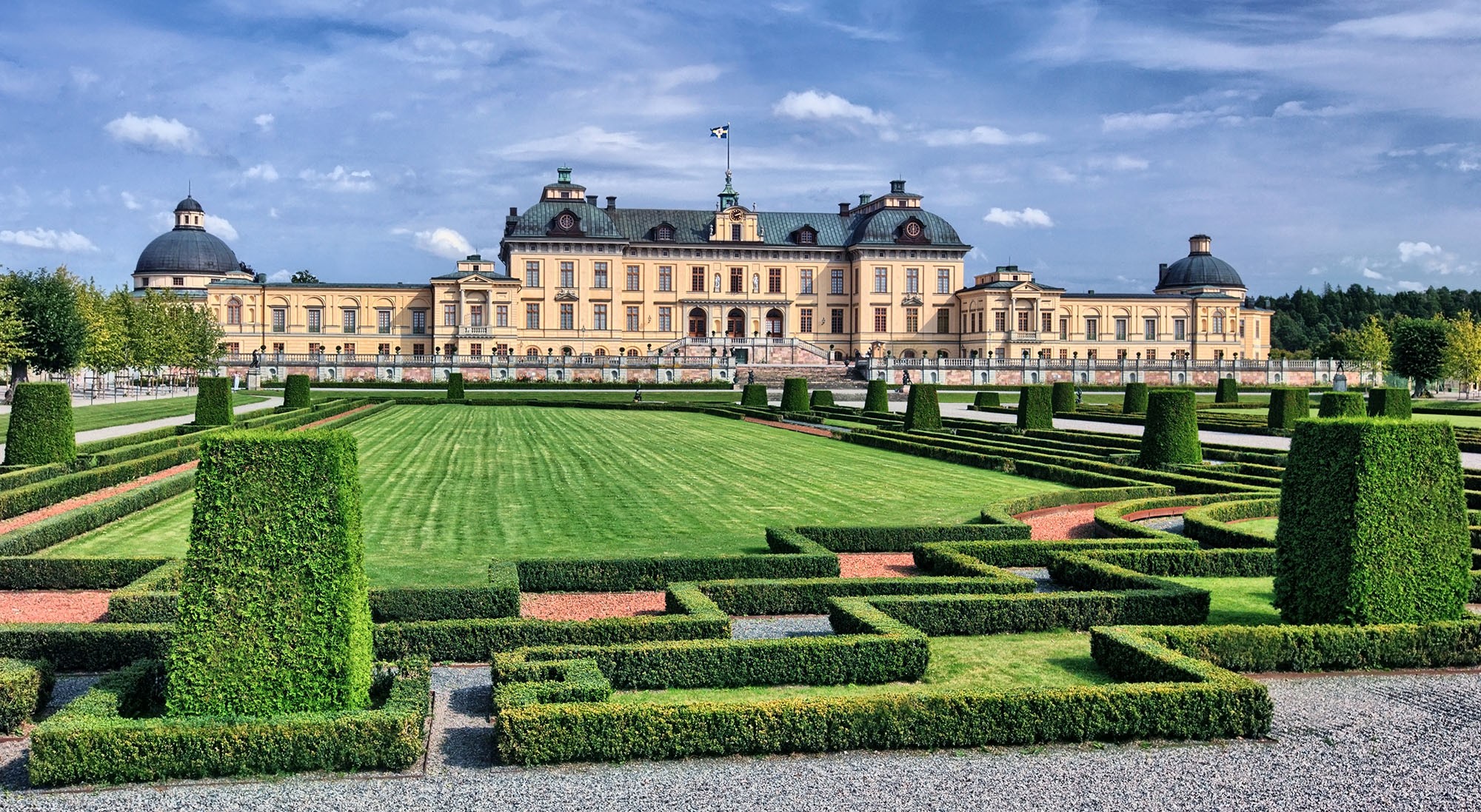Step into our magnificent Swedish castles gallery, where enchanting images await. I was fortunate enough to explore a significant portion of Southern Sweden a few years back, marveling at numerous remarkable edifices and structures. This incredible country, with Stockholm as one of its finest gems, has left an indelible mark on my memory.
In Sweden, the country house holds great importance. Many families who own city residences also possess charming country homes, perhaps not as grand as the manor homes described below, but beautiful nonetheless. If you ever find yourself with the opportunity to visit Sweden, seize it. The country is an ideal destination for exploration and adventure, and traveling by train is an absolute breeze.
1. Ängsö Castle
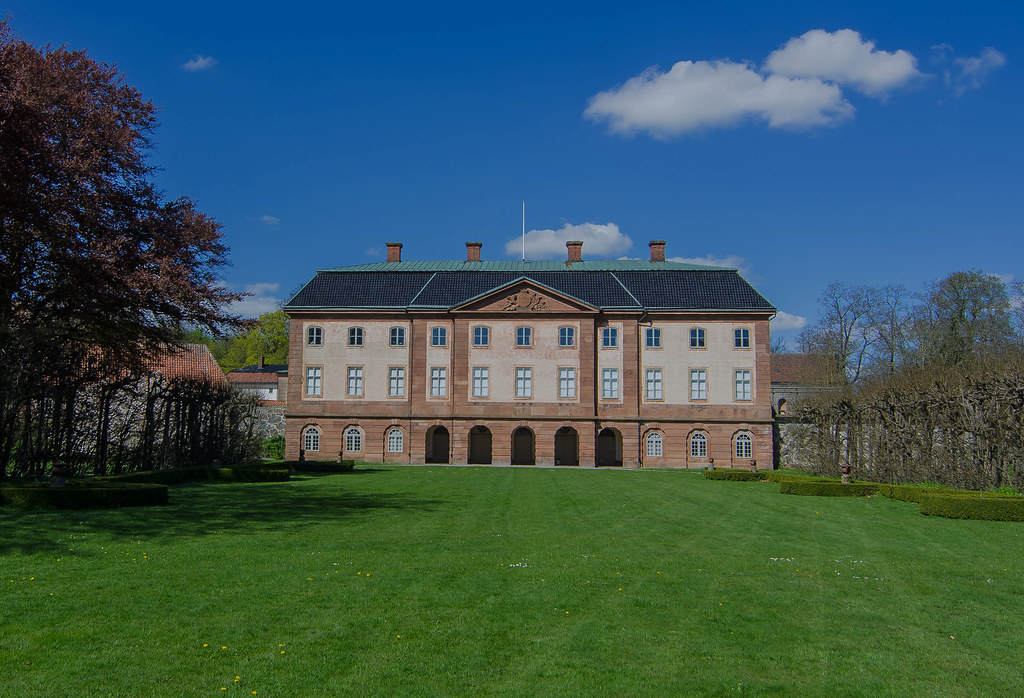
Behold the Ängsö Castle, located in Västerås, Sweden. Once the property of King Canute I of Sweden, this magnificent castle was inherited by him from his father, Eric IX of Sweden. Throughout the years, it passed through the hands of multiple families, most notably the Sparre and Piper families, who made extensive extensions and modifications to the castle. In the mid-18th century, architect Carl Hårleman bestowed upon it the appearance it proudly wears today. From 1710 to 1971, Ängsö Castle belonged to the Piper family until it was eventually entrusted to the Westmanna foundation. Today, this splendid castle welcomes visitors from far and wide.
Details about Ängsö Castle:
Location: Västerås, Sweden
Reconstruction: 18th century
Architect: Carl Hårleman
Architectural Style: Medieval
Present Use: Open to the public
Current Owner: Westmanna foundation
2. Borgeby Castle

Nestled in the Lomma Municipality, Borgeby Castle was initially a 10th-century fortress built by Harald Gormsson, an early Norwegian and Danish King. In the 12th century, it was reconstructed over the original fortress in the renowned Trelleborg style, popular during the Viking Age. Over the centuries, the castle underwent multiple renovations and welcomed numerous aristocratic families until it came into the possession of Hanna and Ernst Norlind. After their passing, the castle was lovingly maintained by the Hanna and Ernst Norlind Foundation.
Details about Borgeby Castle:
Location: Lomma Municipality, Sweden
Construction: 12th century
Builder: Unknown
Architectural Style: Unknown
Present Use: Museum
Current Owner: Hanna and Ernst Norlind Foundation
3. Bogesund Castle
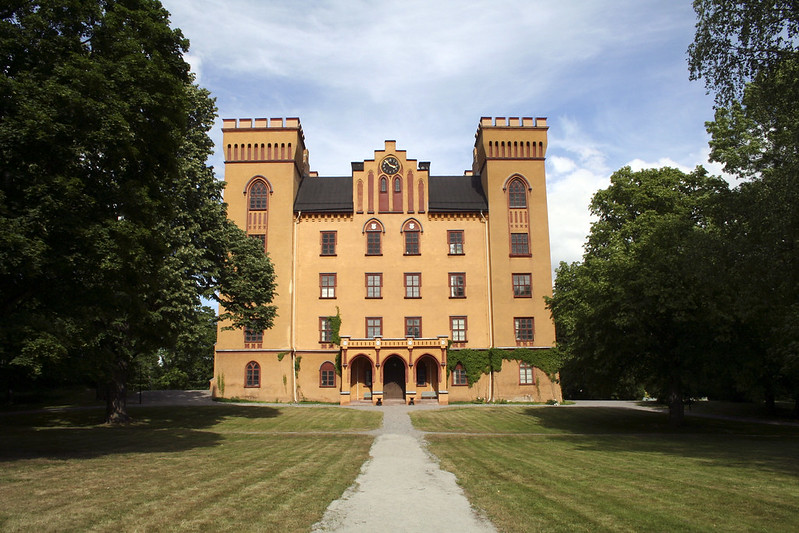
Situated in the municipality of Vaxholm, Bogesund Castle was constructed in 1640 by Per Brahe the Younger. The castle’s core is comprised of the original building, which underwent a remarkable transformation between 1864 and 1867. During this period, it was reconstructed into a medieval romantic style under the guidance of Nils Albrekt von Lantingshausen von Höpken. In 1946, the state acquired the property through a special law known as “lex Bogesund,” declaring it a building memorial managed by the Danish Building Agency in 1949.
Details about Bogesund Castle:
Location: Municipality of Vaxholm, Sweden
Construction: 1640
Builder: Per Brahe the Younger
Architectural Style: Norman/Medieval Romantic
Present Use: Open to the public/Tourist attraction
Current Owner: National Property Agency
4. Christineh of Castle

Between 1737 and 1740, the exquisite Christinehof Castle was constructed in the German Baroque style by Christina Piper, who named the property after herself. The castle’s roots trace back to the 14th century when the first estate, known as Sjöstrup, was owned by a German noble named Snakenborg. In 1725, Christina Piper acquired the property and brought forth its grand transformation.
Details about Christinehof Castle:
Location: Tomelilla Municipality, Sweden
Construction: 1737-1740
Builder: Christina Piper
Architectural Style: German Baroque
Present Use: Open to the public/Tourist attraction
Current Owner: Kingdom of Sweden
5. Drottningholm Palace
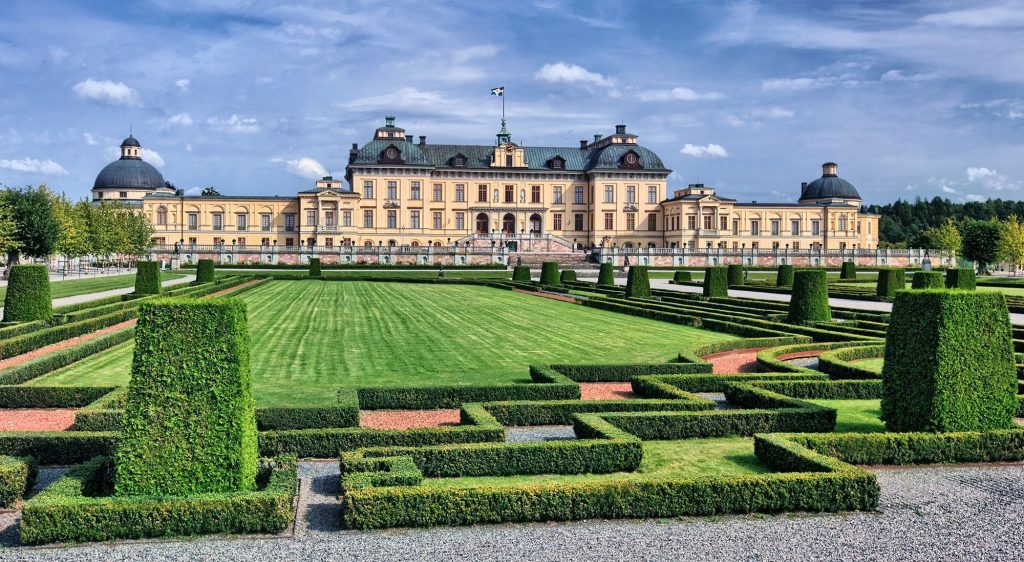
Drottningholm Palace, the private residence of the Swedish royal family, graces the picturesque locale of Drottningholm. Originally erected in 1580 by King John III for his queen, Catherine Jagellon, the palace suffered a devastating fire shortly after Hedwig Eleonora concluded her reign as Queen of Sweden. In the aftermath, architect Nicodemus Tessin the Elder was commissioned by Hedwig Eleonora to reconstruct the castle in a stunning blend of French Baroque and Italian Classical styles. Since then, the palace has remained the private abode of Swedish royalty, with Hedwig Eleonora making it her cherished residence until her passing. Today, Drottningholm Palace proudly stands as one of Sweden’s UNESCO World Heritage Sites.
Details about Drottningholm Palace:
Location: Drottningholm, Sweden
Construction: 17th century
Builder: Hedwig Eleonora
Architectural Style: French Baroque and Italian Classical
Present Use: Residence of the Swedish Royal Family/UNESCO World Heritage Site
Current Owner: Swedish Royal Family
6. Ekebyhov Castle

Ekebyhov Castle, situated in Ekerö Municipality, Sweden, came into existence in 1670 thanks to the efforts of Field Marshal Count Carl Gustaf Wrangel. It replaced a former stone castle founded by Klas Horn during the 16th century. Over the years, the ownership of Ekebyhov Castle changed hands multiple times, with the Ihre family being the last private owners until 1980 when the State of Sweden took over.
Details about Ekebyhov Castle:
Location: Ekerö Municipality, Sweden
Construction: 1670
Builder: Field Marshal Count Carl Gustaf Wrangel
Architectural Style: Unknown
Present Use: Municipal Conference Center/Cultural Activities Center
Current Owner: State of Sweden
7. Ekenäs Castle
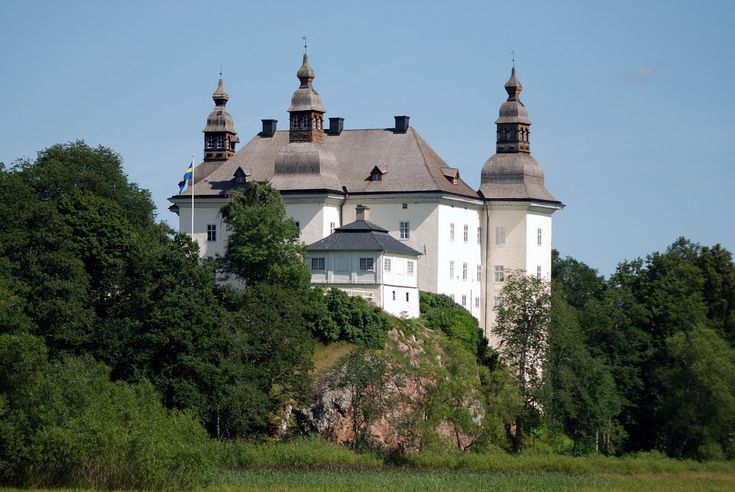
Ekenäs Castle, situated in Linköping Municipality, Sweden, stands atop the foundations of a medieval fortress dating back to the 14th century. This exceptionally well-preserved Renaissance castle has remained privately owned throughout its existence, though it graciously opens its doors to visitors during the summer months.
Details about Ekenäs Castle:
Location: Linköping Municipality, Sweden
Construction: 17th century
Builder: Unknown
Architectural Style: Renaissance
Present Use: Privately owned/Open to the public during the summer
Current Owner: Private owner
8. Ellinge Castle
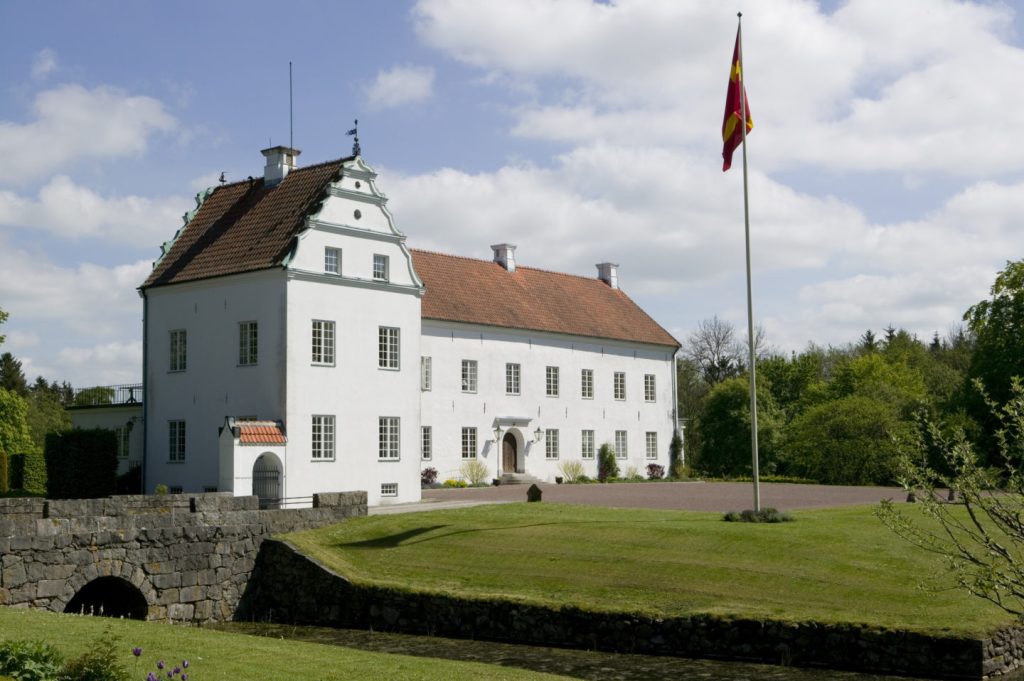
With a rich history dating back to the 13th century, Ellinge Castle, located in Eslöv Municipality, stands as one of Skåne’s oldest castles. Over the years, it has been owned by influential Danish families. Presently, the castle serves as a restaurant, offering delectable cuisine made with estate-grown wheat and barley vodka. Additionally, Ellinge Castle is available for rental, providing a picturesque venue for conferences, weddings, and other events.
Details about Ellinge Castle:
Location: Eslöv Municipality, Sweden
Construction: Unclear
Builder: Unknown
Architectural Style: Medieval
Present Use: Restaurant/Events and conferences venue
Current Owner: Unclear
9. Gripsholm Castle

Gripsholm Castle, a regal fortress and residence, graces the town of Mariefred. Constructed in 1537 by King Gustav Vasa, it exemplifies the finest Swedish architecture of the Vasa dynasty, blending Renaissance interiors with a Medieval exterior. Today, the castle serves as a museum and stands proudly among the crown palaces of Sweden.
Details about Gripsholm Castle:
Location: Mariefred, Sweden
Construction: 1537
Builder: King Gustav I
Architectural Style: Renaissance
Present Use: Museum/National Portrait Gallery of Sweden/Crown palaces in Sweden
Current Owner: Kingdom of Sweden
10. Gunnebo Castle
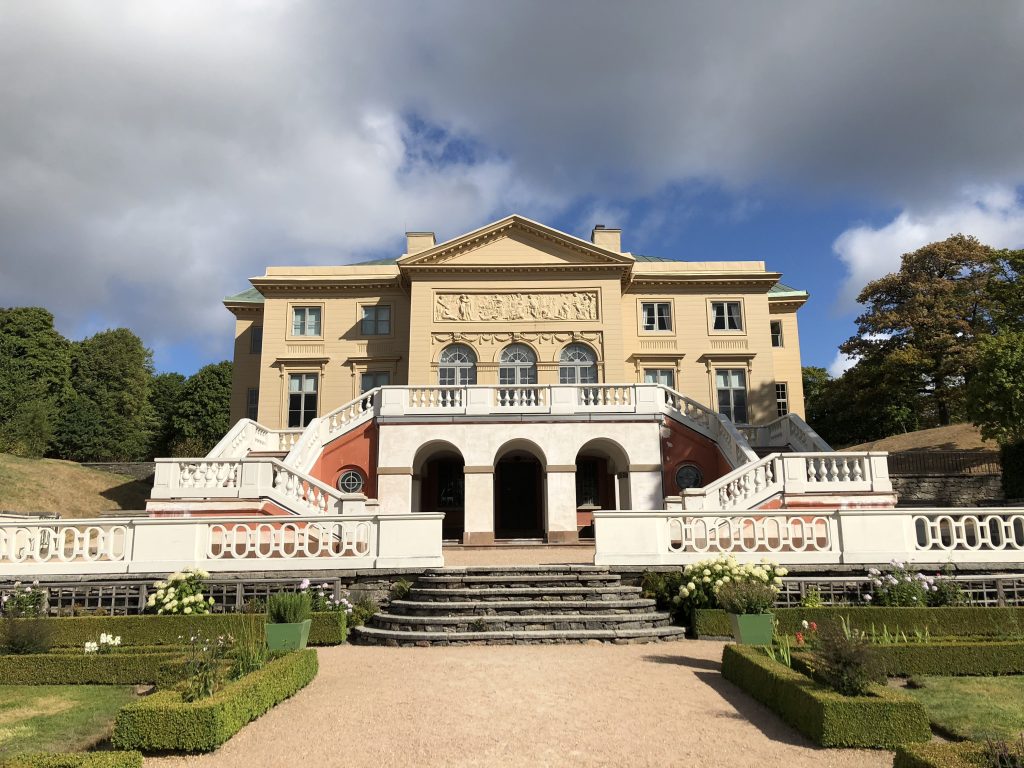
Situated in Mölndal Municipality, Gunnebo House was commissioned by one of Gothenburg’s wealthiest men, John Hall, and designed by the renowned architect Carl Wilhelm Carlberg. Completed in Neoclassical style, it served as Hall’s summer residence. After changing hands several times, the castle was eventually purchased by Wilhelm Denninghoff as a wedding gift for Carl and Hilda Sparre. The Sparre family resided there until Hilda’s passing in 1948, after which the castle was sold to the town of Mölndal. Gunnebo House has hosted distinguished guests, including King Gustav III of Sweden and Marie Thérèse of France, and even welcomed a visit from U.S. President George W. Bush, accompanied by King Gustav V.
Details about Gunnebo Castle:
Location: Mölndal Municipality, Sweden
Construction: 18th century
Builder: Architect Carl Wilhelm Carlberg for John Hall
Architectural Style: Neoclassical
Present Use: Open to the public/Tourist attraction
Current Owner: Town of Mölndal
11. Hjularöd Castle
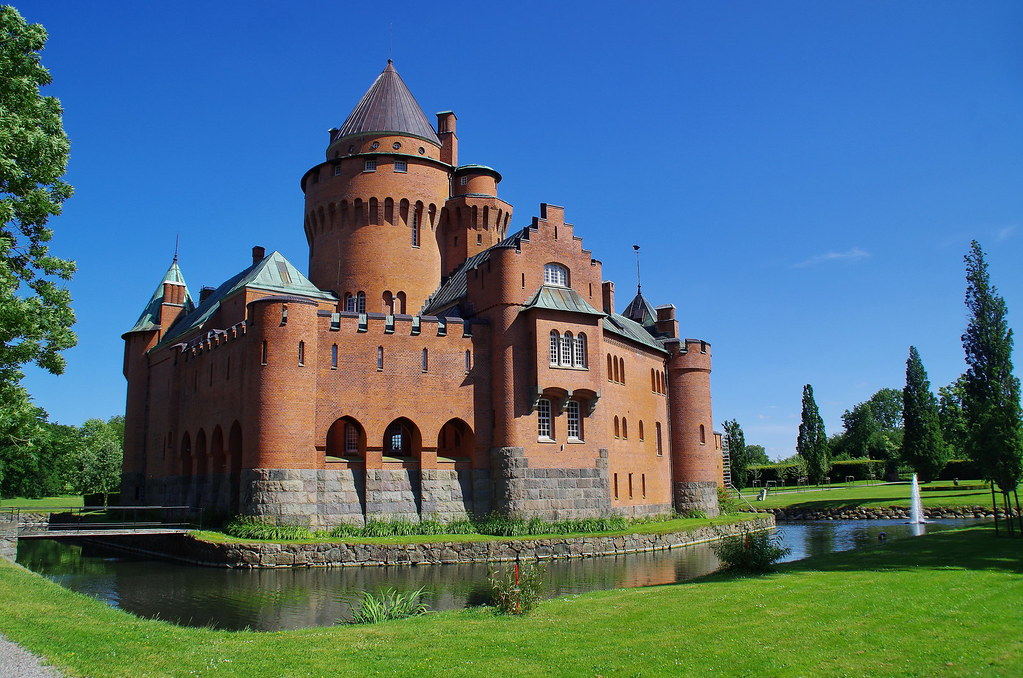
Nestled in the scenic Eslöv Municipality of Scania, Hjularöd Castle was erected between 1894 and 1897, though its history dates back to 1391. Chamberlain Hans Gustaf Toll commissioned architects Isak Gustaf Clason and Lars Israel Wahlman to design the castle in the French Gothic style. Since 1926, it has been the cherished property of the Bergengren family and is not accessible to the general public.
Details about Hjularöd Castle:
Location: Eslöv Municipality, Sweden
Construction: 1894-1897
Builder: Hans Gustaf Toll
Architectural Style: Gothic
Present Use: Private property
Current Owner: Bergengren family
12. Johannishus Castle
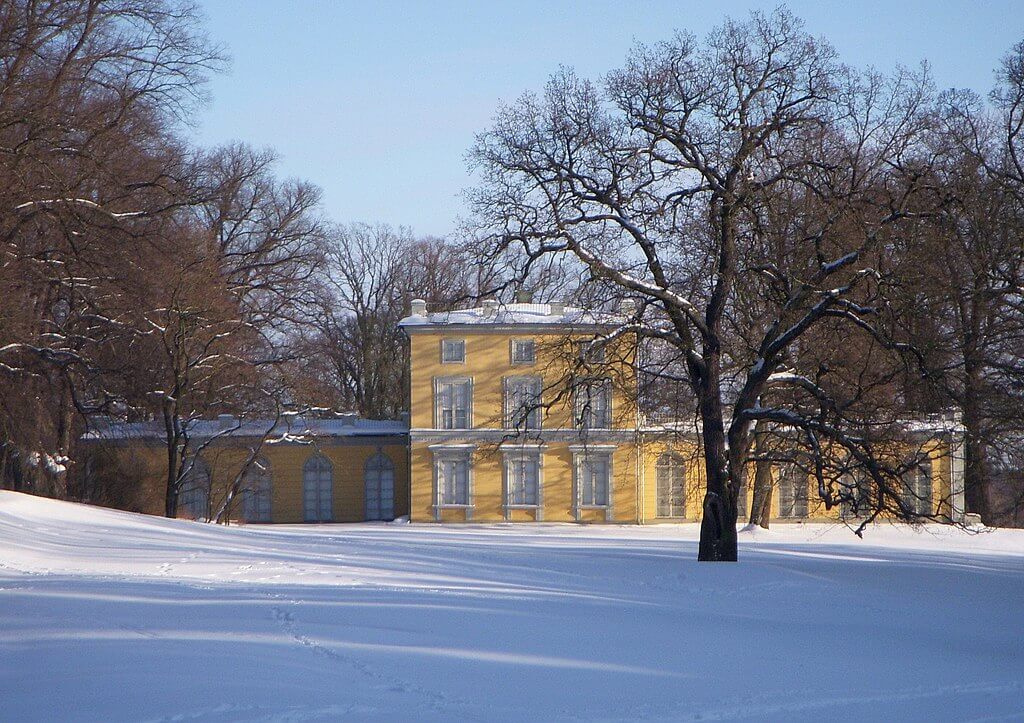
In Ronneby Municipality, Sweden, the grand Johannishus Castle has been owned by the Wachtmeister family since 1684. As Blekinge Region’s largest estate, the castle’s current structure was completed in 1772, boasting a magnificent Neoclassical style.
Details about Johannishus Castle:
Location: Ronneby Municipality, Sweden
Construction: 17th century
Builder: Wachtmeister family
Architectural Style: Neoclassical
Present Use: Private property
Current Owner: Wachtmeister family
13. Kalmar Castle

Replacing an ancient defensive tower erected in 1180, Kalmar Castle was initially conceived as a stronghold to safeguard the area against pirates and other adversaries. Over time, the medieval fortress was transformed into a splendid Renaissance-style castle by King Gustav I and his sons, King Eric XIV and King John III. Though it suffered damage and fell into disrepair, architect Fredrik Wilhelm Scholander meticulously restored the castle in the 19th century. Today, it stands as one of Sweden’s most well-preserved Renaissance castles, open to the public.
Details about Kalmar Castle:
Location: Kalmar City, Sweden
Construction: Reconstructed in the 16th century
Builder: Reconstructed by King Gustav I, King Eric XIV, and King John III
Architectural Style: Renaissance
Present Use: Open to the public
Current Owner: City of Kalmar
14. Kastellet Fortress
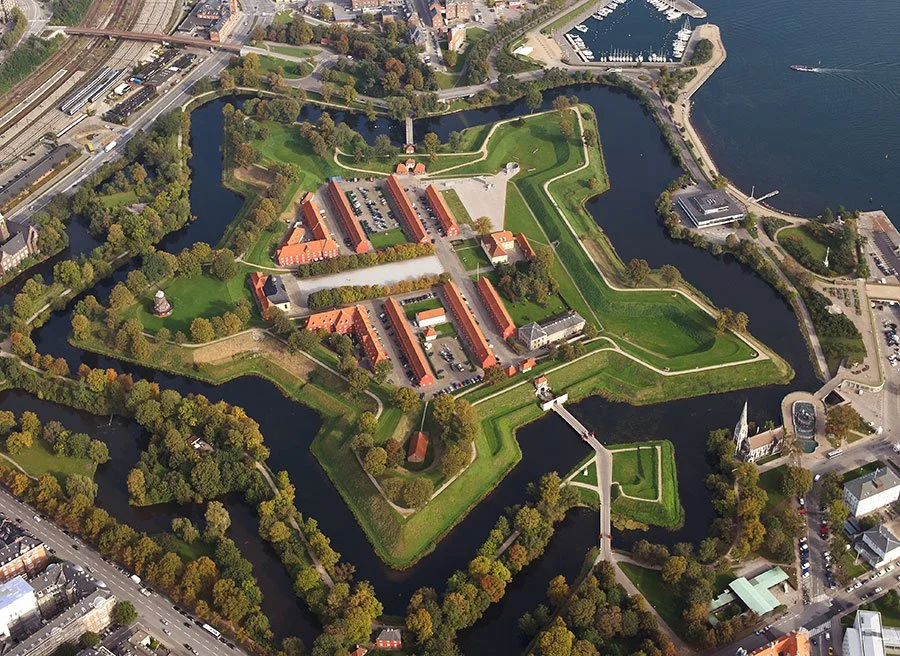
Kastellet, a star-shaped fortress in Copenhagen, Denmark, stands as one of Northern Europe’s most impeccably preserved fortresses. Frederik III initiated its construction in 1626, resulting in a grand ensemble of eight buildings, including the iconic Commander’s House, now serving as the official residence of the Danish Chief of Defence. The Kastellet remains an active military area under the Danish Defence Ministry, featuring a museum and opening its gates to the public.
Details about Kastellet Fortress:
Location: Copenhagen, Denmark
Construction: 17th century
Builder: Frederik III
Architectural Style: Baroque
Present Use: Danish Defence Ministry
Current Owner: Kingdom of Denmark
15. Kronovall Castle
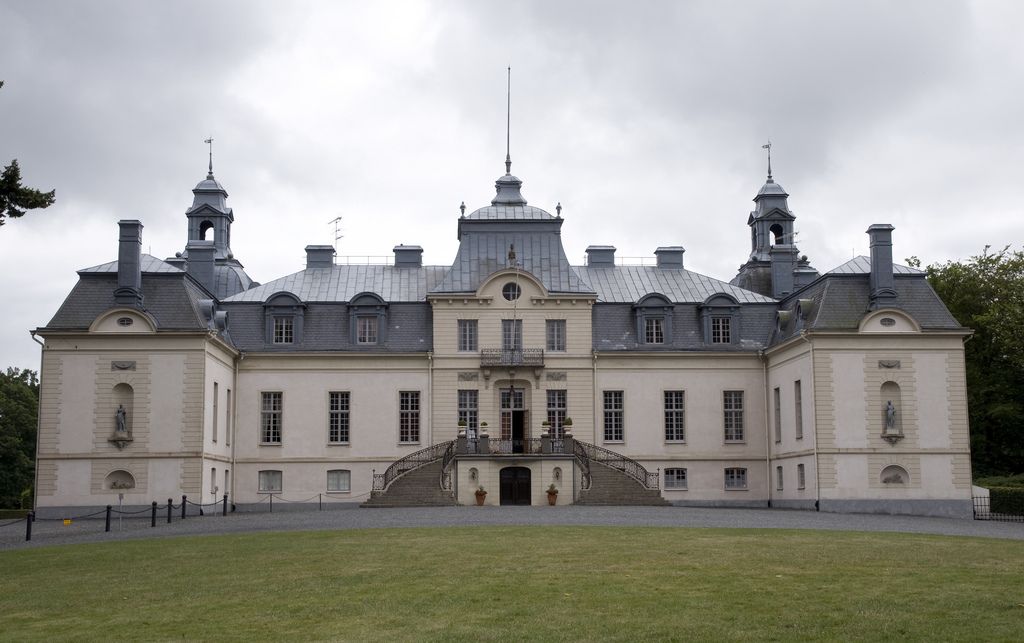
Though mentioned as early as the 1600s, the main building of Kronovall Castle was erected in 1760, showcasing the elegance of French Baroque style, courtesy of architect Isak Gustaf Clason. Today, this splendid castle houses a hotel, restaurant, wine chateau, and serves as a private residence.
Details about Kronovall Castle:
Location: Tomelilla Municipality, Sweden
Construction: 1760
Builder: Isak Gustaf Clason
Architectural Style: French Baroque
Present Use: Hotel/Restaurant/Wine chateau/Private residence
Current Owner: Private owner
16. Läckö Castle
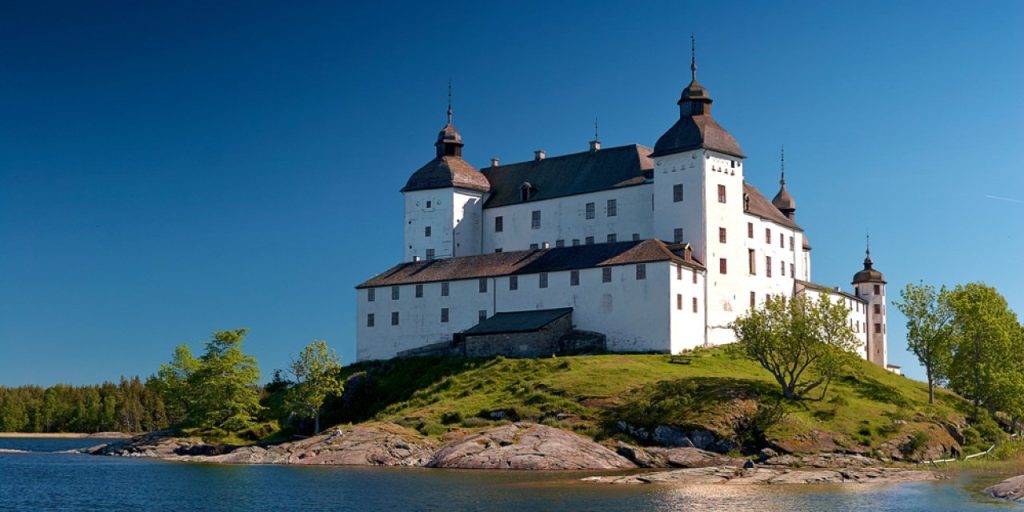
Situated on Kållandsö Island, Läckö Castle originated as a fortress consisting of three houses encircled by a protective wall. Ravaged by a massive fire in the mid-15th century, the castle underwent reconstruction and expansion under the guidance of bishop Brynolf Gerlachsson. It subsequently passed through the hands of King Gustav Vasa and Field Marshal Jacob Pontusson De la Gardie, who undertook significant modifications. Count Magnus Gabriel De la Gardie then contributed major constructions to the property. Today, Läckö Castle is a national monument managed by the National Property Board.
Details about Läckö Castle:
Location: Lidköping, Sweden
Construction: Reconstructed in the 15th century
Builder: Reconstructed by bishop Brynolf Gerlachsson
Architectural Style: Swedish Baroque
Present Use: National monument
Current Owner: National Property Board
17. Lövstad Castle
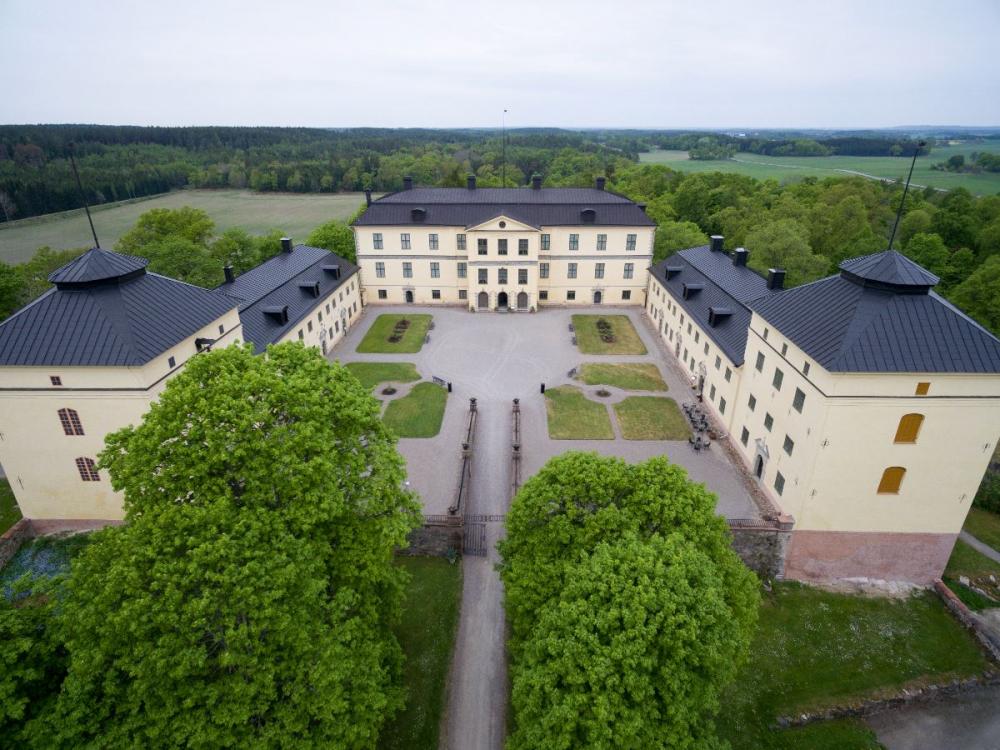
Dating back to the 15th century, Lövstad Castle’s present structure was constructed in the 17th century by Axel Lillie. Over the years, it passed through the von Fersen family, ultimately coming into the possession of Sophie Piper. Following the noble lineage, the Kingdom of Sweden claimed ownership, transforming the castle into a museum open to the public, offering guided tours.
Details about Lövstad Castle:
Location: Östergötland, Sweden
Construction: 17th century
Builder: Axel Lillie
Architectural Style: Baroque
Present Use: Museum/Open to the public/Tourist attraction
Current Owner: Kingdom of Sweden
18. Lövstabruk Manor House

Lövstabruk Manor House, a stunning manor situated in Lövstabruk, was constructed in the 18th century by Jean Eric Rehn. Originally an ironworks founded by local farmers in the 16th century, it was later sold to Gimo-Österby AB in 1917, ceasing iron production shortly thereafter. Today, the manor house welcomes tourists who can embark on guided tours to explore its captivating beauty.
Details about Lövstabruk Manor House:
Location: Lövstabruk, Sweden
Construction: 18th century
Builder: Jean Eric Rehn
Architectural Style: Baroque
Present Use: Tourist attraction
Current Owner: Town of Lövstabruk
19. Örebro Castle

Örebro Castle, a medieval stronghold in Örebro, Närke, Sweden, was originally erected as a defensive fortress in the mid-14th century by King Magnus Eriksson. It later underwent a transformation into a Renaissance castle during the reign of Duke Charles, losing much of its original fortification purpose. In 1764, the Governor of Örebro County made it his personal residence. Eventually, the castle was acquired by the State of Närke and has since been recognized as a state building monument, dating back to 1935.
Details about Örebro Castle:
Location: Örebro, Sweden
Construction: 14th century
Builder: King Magnus Eriksson
Architectural Style: Renaissance/Neoclassical
Present Use: National Monument
Current Owner: State of Närke
20. Örenäs Castle
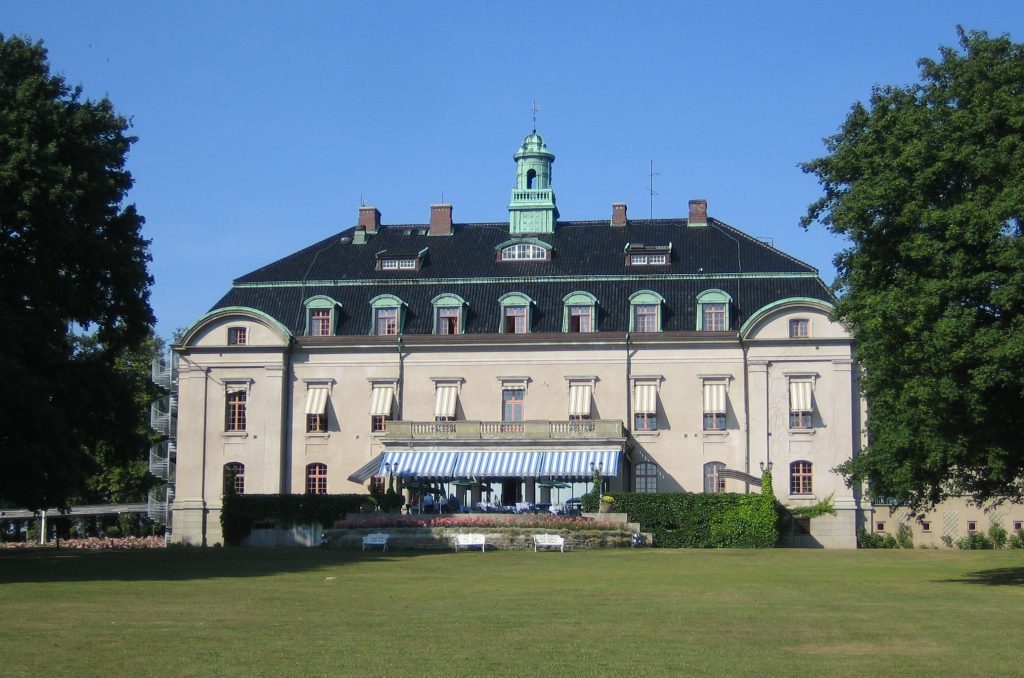
Örenäs Castle, an architectural gem in Landskrona Municipality, Scania, showcases the elegance of German Baroque style. Built between 1914 and 1918, it stands as the youngest castle in both Scania and Sweden. Currently, Örenäs Castle serves as a hotel and conference center, complemented by a public restaurant.
Details about Örenäs Castle:
Location: Landskrona Municipality, Sweden
Construction: 1914-1918
Builder: Unknown
Architectural Style: German Baroque
Present Use: Hotel/Restaurant/Conference center
Current Owner: State of Scania
21. Rånäs Castle
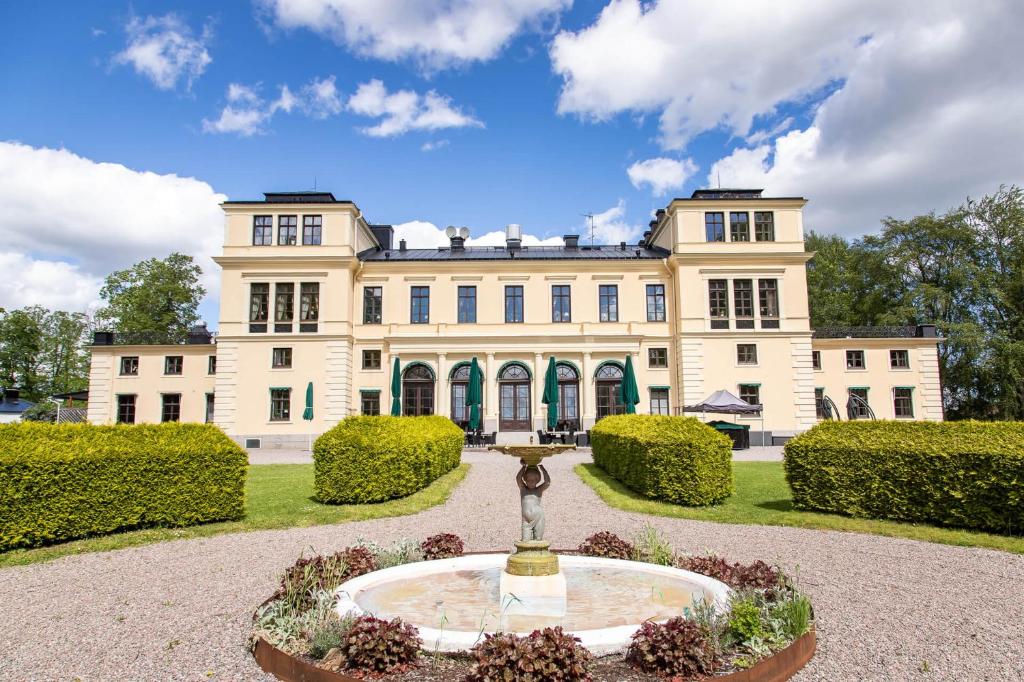
Located in Norrtälje Municipality, Sweden, Rånäs Castle has a rich history dating back to the 17th century. The current structure was built in the 19th century and showcases a beautiful blend of architectural styles, including Neo-Gothic and Renaissance Revival. The castle is now a luxurious hotel and conference center, offering guests a remarkable experience surrounded by stunning natural scenery.
Details about Rånäs Castle:
Location: Norrtälje Municipality, Sweden
Construction: 19th century
Architectural Style: Neo-Gothic, Renaissance Revival
Present Use: Hotel, Conference center
Current Owner: Private owner
22. Skokloster Castle
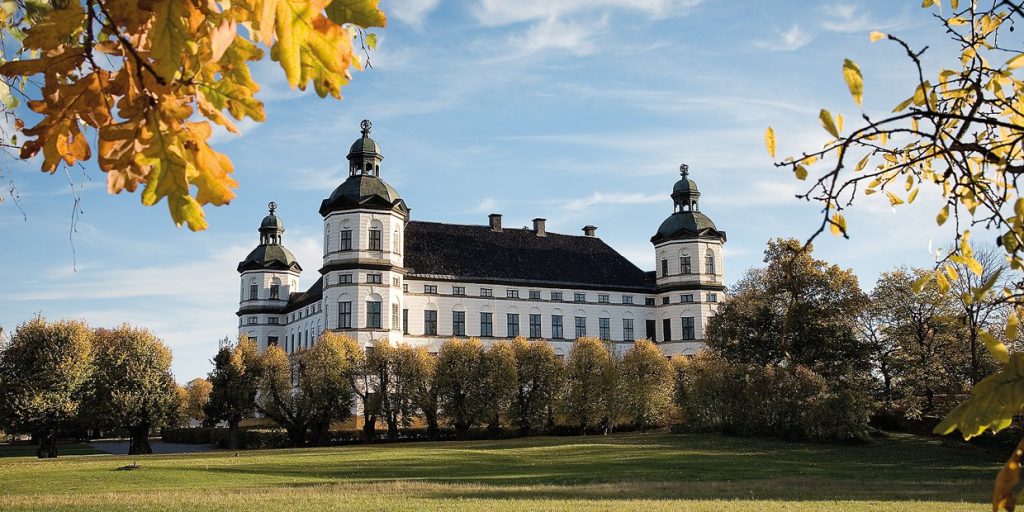
Situated on the shores of Lake Mälaren in Håbo Municipality, Sweden, Skokloster Castle is a magnificent Baroque-style fortress. Construction began in the 17th century under the patronage of Carl Gustaf Wrangel and was completed by his son, Gustaf Adolf Wrangel. The castle houses an extensive collection of art, weaponry, and rare artifacts, making it a popular destination for history enthusiasts and tourists alike.
Details about Skokloster Castle:
Location: Håbo Municipality, Sweden
Construction: 17th century
Builder: Carl Gustaf Wrangel, Gustaf Adolf Wrangel
Architectural Style: Baroque
Present Use: Museum, Tourist attraction
Current Owner: Swedish National Heritage Board
23. Sofiero Palace
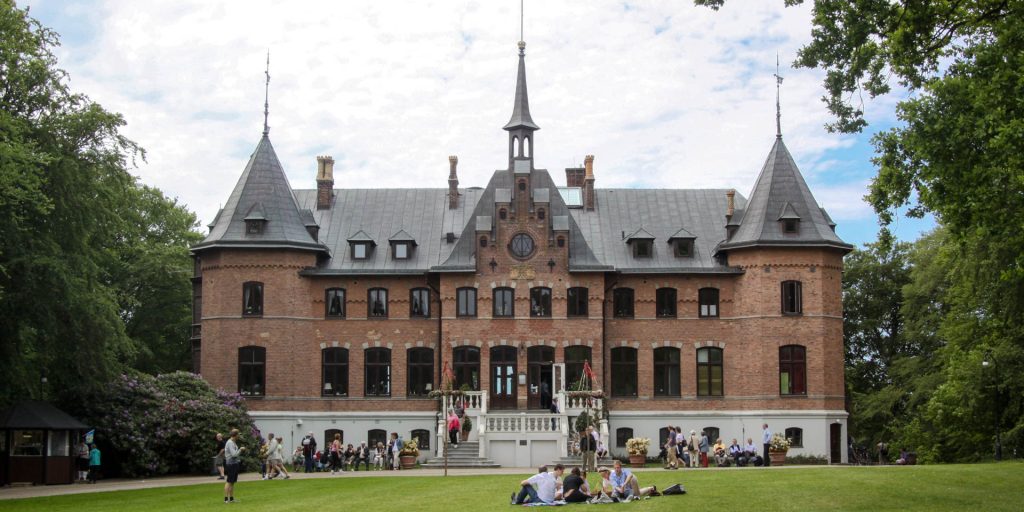
Sofiero Palace, located in Helsingborg Municipality, Scania, Sweden, is a picturesque royal residence. Originally built in the mid-19th century as a summer retreat for Swedish royalty, the palace features stunning gardens and a vast collection of rhododendron plants. Visitors can explore the beautifully landscaped grounds and enjoy the splendor of this enchanting palace.
Details about Sofiero Palace:
Location: Helsingborg Municipality, Sweden
Construction: Mid-19th century
Architectural Style: Royal
Present Use: Palace, Gardens, Tourist attraction
Current Owner: Swedish Royal Family
24. Steninge Palace
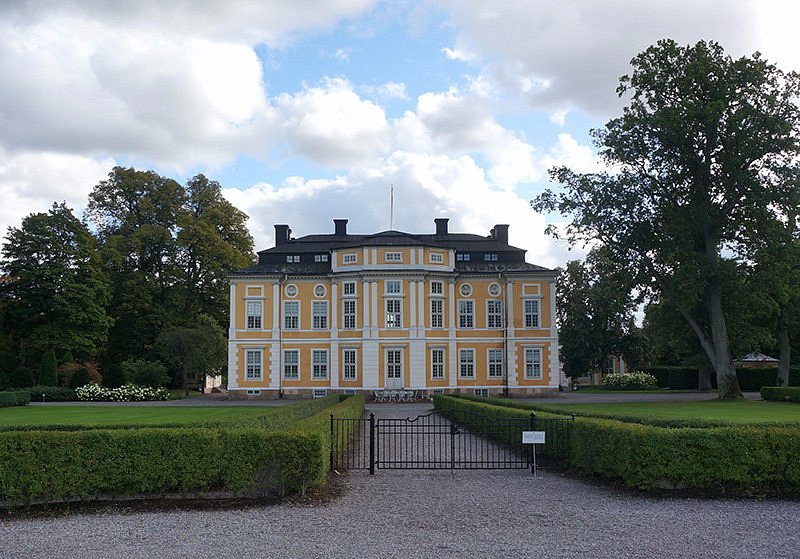
Steninge Palace, situated in Sigtuna Municipality, Sweden, is a remarkable example of Swedish Palladian architecture. Constructed in the late 17th century, the palace boasts grand halls, elegant interiors, and a breathtaking facade. It currently serves as a cultural center, hosting exhibitions, concerts, and events that celebrate art and design.
Details about Steninge Palace:
Location: Sigtuna Municipality, Sweden
Construction: Late 17th century
Architectural Style: Swedish Palladian
Present Use: Cultural center, Exhibition venue
Current Owner: Private owner
25. Tjolöholm Castle
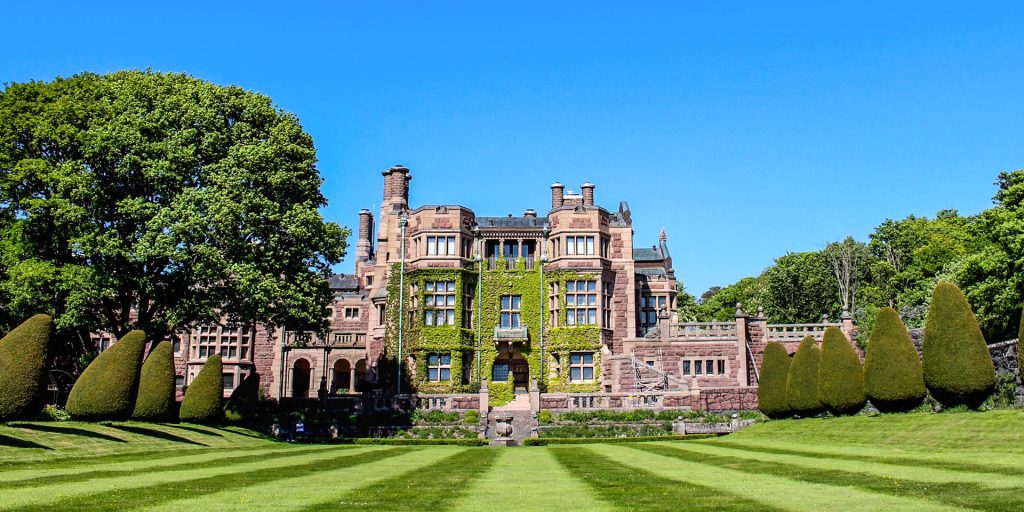
Tjolöholm Castle, located in Kungsbacka Municipality, Sweden, is a stunning example of English Tudor architecture. Built in the early 20th century, the castle stands amidst picturesque gardens and overlooks the Kattegat Sea. Today, it serves as a popular venue for weddings, conferences, and cultural events, attracting visitors with its romantic charm.
Details about Tjolöholm Castle:
Location: Kungsbacka Municipality, Sweden
Construction: Early 20th century
Architectural Style: English Tudor
Present Use: Venue for weddings, conferences, cultural events
Current Owner: Tjolöholm Castle Foundation
26. Torpa Stenhus Castle

Torpa Stenhus Castle, located in Ulricehamn Municipality, Sweden, is a medieval fortress with a fascinating history. Dating back to the 16th century, the castle showcases a mix of architectural styles, including Gothic and Renaissance. Today, it is open to the public, offering guided tours that provide insight into its rich past.
Details about Torpa Stenhus Castle:
Location: Ulricehamn Municipality, Sweden
Construction: 16th century
Architectural Style: Gothic, Renaissance
Present Use: Open to the public, Tourist attraction
Current Owner: National Property Board
27. Vadstena Castle
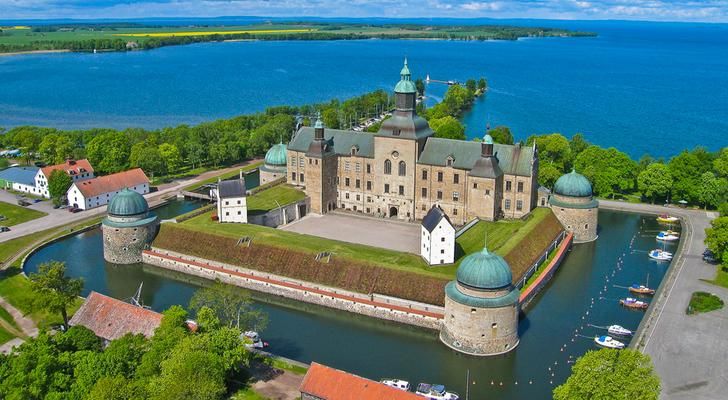
Vadstena Castle, situated in Vadstena Municipality, Sweden, is a Renaissance-style fortress built by King Gustav Vasa in the 16th century. It played a significant role as a royal residence and a defense stronghold. Today, the castle houses a museum showcasing the rich history of the region, making it a popular destination for history enthusiasts.
Details about Vadstena Castle:
Location: Vadstena Municipality, Sweden
Construction: 16th century
Builder: King Gustav Vasa
Architectural Style: Renaissance
Present Use: Museum, Tourist attraction
Current Owner: Swedish National Heritage Board
28. Visingsborg Castle

Visingsborg Castle, also known as Visingsö Castle, is located on the island of Visingsö in Jönköping County, Sweden. This medieval fortress dates back to the 12th century and has witnessed significant historical events. Though now in ruins, it attracts visitors who are captivated by its fascinating past and stunning views of the surrounding landscape.
Details about Visingsborg Castle:
Location: Visingsö, Jönköping County, Sweden
Construction: 12th century
Architectural Style: Medieval
Present Use: Ruins, Tourist attraction
Current Owner: Jönköping County
29. Wanas Castle

Wanas Castle, situated in Knislinge, Sweden, is an exquisite estate surrounded by lush forests and picturesque landscapes. Built in the late 16th century, the castle features Renaissance and Baroque architectural elements. Today, it serves as an art center, showcasing contemporary art exhibitions and offering visitors a unique cultural experience.
Details about Wanas Castle:
Location: Knislinge, Sweden
Construction: Late 16th century
Architectural Style: Renaissance, Baroque
Present Use: Art center, Cultural venue
Current Owner: Private owner
30. Övedskloster Castle

Övedskloster Castle, located in Sjöbo Municipality, Sweden, is a magnificent manor house with a history dating back to the 13th century. The current structure was built in the 18th century and reflects the elegance of the Gustavian architectural style. Set amidst stunning gardens and parkland, the castle offers a tranquil and idyllic setting.
Details about Övedskloster Castle:
Location: Sjöbo Municipality, Sweden
Construction: 18th century
Architectural Style: Gustavian
Present Use: Private residence, Gardens
Current Owner: Private owner
